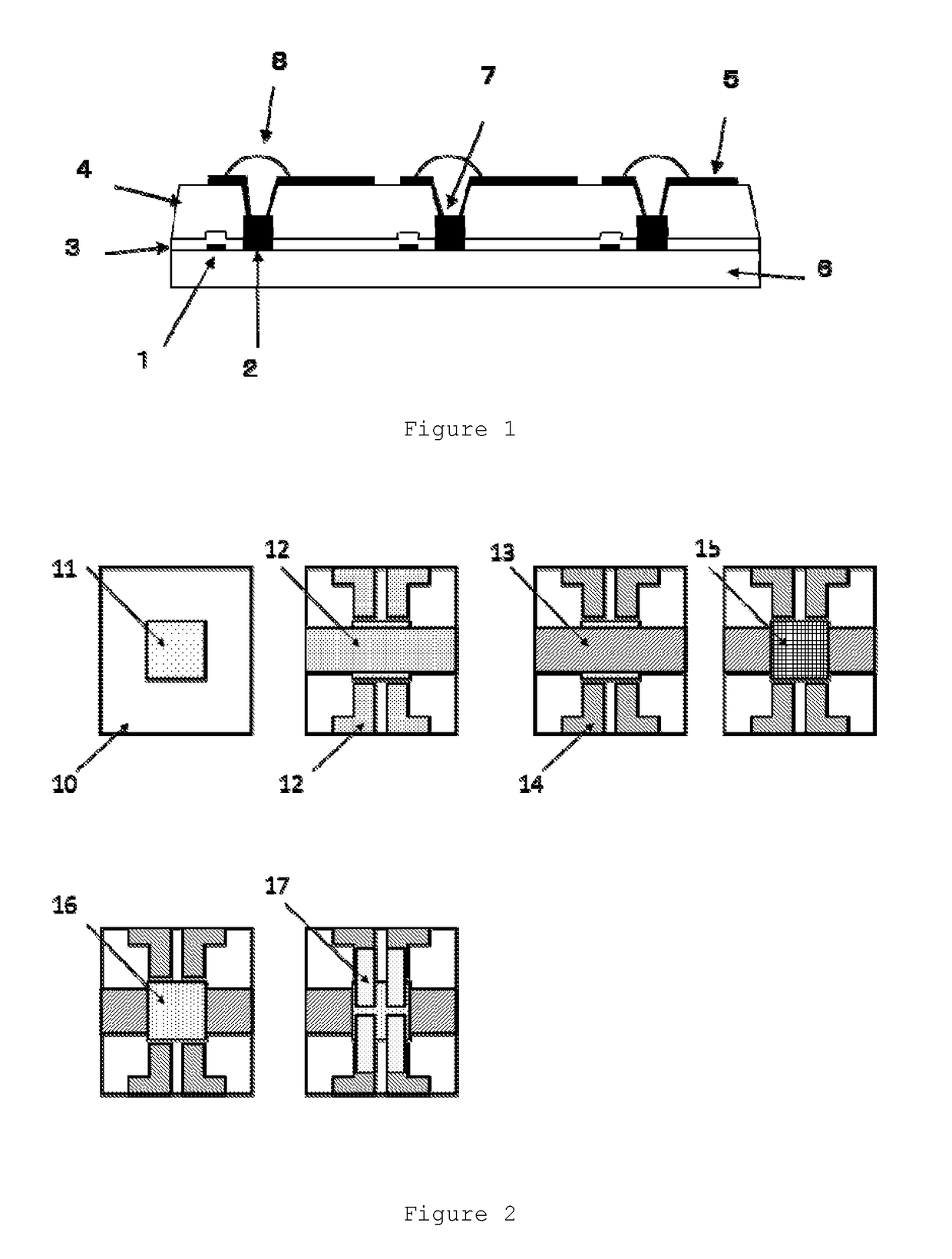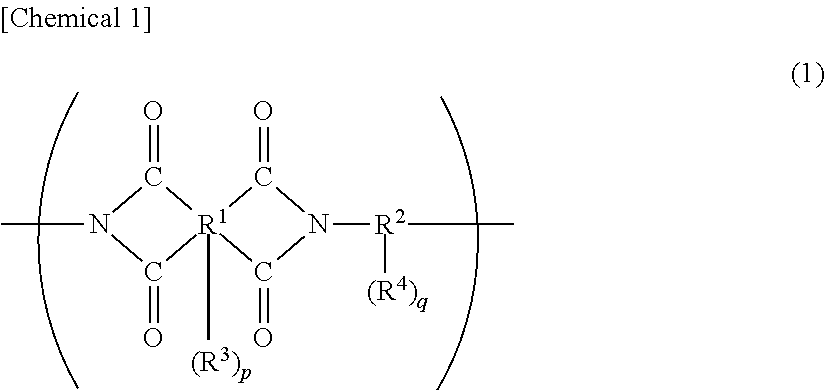Organic el display device
- Summary
- Abstract
- Description
- Claims
- Application Information
AI Technical Summary
Benefits of technology
Problems solved by technology
Method used
Image
Examples
synthesis example 1
Synthesis of Hydroxyl Group-Containing Diamine Compound
[0154]In a mixture of 100 mL of acetone and 17.4 g (0.3 mol) of propylene oxide, 18.3 g (0.05 mol) of 2,2-bis(3-amino-4-hydroxyphenyl)hexafluoropropane (hereinbelow, referred to as BAHF) was dissolved, and the solution was cooled to −15° C. To this, a solution prepared by dissolving 20.4 g (0.11 mol) of 3-nitrobenzoyl chloride in 100 mL of acetone was added dropwise. After the completion of dropping, the contents were allowed to undergo a reaction for 4 hours at −15° C., and then, the temperature thereof was returned to room temperature. The precipitated white solid matter was filtered off and dried under vacuum at 50° C.
[0155]In a 300-mL stainless steel autoclave, 30 g of the solid matter was placed, the solid matter was dispersed in 250 mL of methyl cellosolve, and to this dispersion, 2 g of 5% palladium-carbon was added. Hydrogen was introduced thereinto by means of a balloon, and the contents were allowed to undergo a reduct...
synthesis example 2
Synthesis of Alkali-Soluble Resin (A-1)
[0156]Under a stream of dry nitrogen, 31.0 g (0.10 mol) of 3,3′,4,4′-diphenyl ether tetracarboxylic acid dianhydride (hereinbelow, referred to as ODPA) was dissolved in 500 g of NMP. To this, 45.35 g (0.075 mol) of the hydroxyl group-containing diamine compound obtained in Synthesis Example 1 and 1.24 g (0.005 mol) of 1,3-bis(3-aminopropyl)tetramethyldisiloxane were added together with 50 g of NMP, the contents were allowed to undergo a reaction for 1 hour at 20° C. and then allowed to undergo a reaction for 2 hours at 50° C. Next, to the reaction liquid, 4.36 g (0.04 mol) of 4-aminophenol as a terminal blocking agent was added together with 5 g of NMP, and the contents were allowed to undergo a reaction for 2 hours at 50° C. Afterward, to the reaction liquid, a solution prepared by diluting 28.6 g (0.24 mol) of N,N-dimethylformamide dimethylacetal with 50 g of NMP was added dropwise over a period of 10 minutes. After dropping, the contents wer...
synthesis example 3
Synthesis of Alkali-Soluble Resin (A-2)
[0157]Under a stream of dry nitrogen, 29.3 g (0.08 mol) of BAHF, 1.24 g (0.005 mol) of 1,3-bis(3-aminopropyl)tetramethyldisiloxane and 3.27 g (0.03 mol) of 3-aminophenol as a terminal blocking agent were dissolved in 150 g of N-methyl-2-pyrrolidone (NMP). To this, 31.0 g (0.1 mol) of ODPA was added together with 50 g of NMP, and the contents were stirred for 1 hour at 20° C. and then stirred for 4 hours at 50° C. Afterward, 15 g of xylene was added thereto, and the contents were stirred for 5 hours at 150° C. while water was azeotropically removed together with xylene. After the completion of stirring, the solution was charged into 3 L of water to collect a white precipitate. The precipitate was collected by filtration to be washed three times with water, after which the precipitate was dried for 24 hours by means of a vacuum drying machine at 80° C. to obtain a polyimide (A-2) which is an alkali-soluble resin.
PUM
| Property | Measurement | Unit |
|---|---|---|
| Temperature | aaaaa | aaaaa |
| Temperature | aaaaa | aaaaa |
| Fraction | aaaaa | aaaaa |
Abstract
Description
Claims
Application Information
 Login to View More
Login to View More - R&D
- Intellectual Property
- Life Sciences
- Materials
- Tech Scout
- Unparalleled Data Quality
- Higher Quality Content
- 60% Fewer Hallucinations
Browse by: Latest US Patents, China's latest patents, Technical Efficacy Thesaurus, Application Domain, Technology Topic, Popular Technical Reports.
© 2025 PatSnap. All rights reserved.Legal|Privacy policy|Modern Slavery Act Transparency Statement|Sitemap|About US| Contact US: help@patsnap.com



